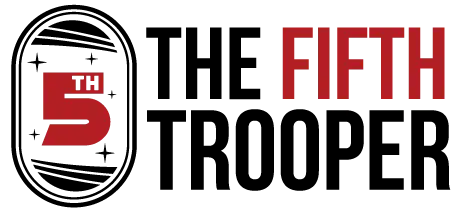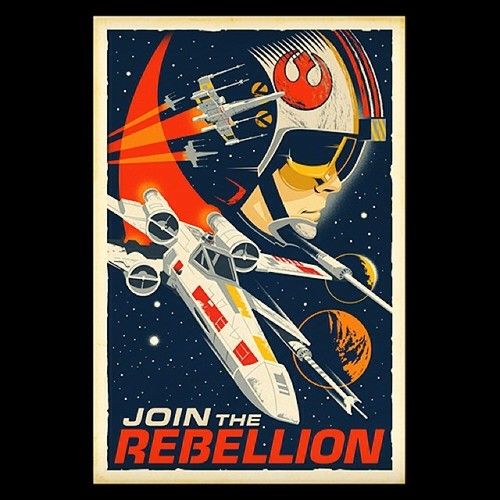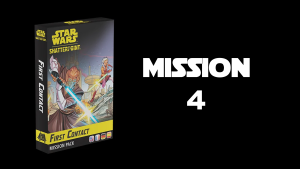This article will be a guide to getting started with the Rebel Alliance in Star Wars: Legion.
This Article was written in July of 2022, if you read it significantly after that date the information may be out of date.
Last time I wrote about getting started with Legion in a more general sense, but I’m looking to explore the factions more thoroughly to help people who have settled on a faction or are looking for a more in-depth look before they make a decision. I’m starting this week with my personal favorite faction: The Rebel Alliance.
Difficulty: Easy to Medium
Rebels are a good way to get into the game. They don’t have as many esoteric mechanics to understand like the Clone Wars factions do and their units do a fair amount of damage. The difficulty comes in their fragility, until you learn to get the maximum advantage out of cover and line of sight, they will die extremely easily so you always need to be cautious about where you leave your units.
Unlike Droids, who are also generally delicate, you can’t afford to lose your units quite so easily, and you’ll feel every loss. It’s very much a “glass cannon” faction with strong but delicate units you must maneuver into ideal positions to take out the enemy and not get torn apart from retaliating fire.
Strengths and Weaknesses
I gave a light touch on what makes each army stand out in my initial article, but I’d like to explore not only what makes the army good but also what challenges you may have to contend with if you fight with this army. Some of these weaknesses can be dealt with or minimized on certain lists, it’s not necessarily a universal experience, just a common one.
Strengths
- Strong Heroes – Very fitting for the Rebellion, your trademark heroes are some of the best in the game. If you like a list built around using a bunch of Heroes, or one really strong one who is the center of attention, few other armies can do it like the Rebellion can. There’s also a diverse range of playstyles, from the melee beatstick that is Operative Luke, to the sniper/mid range shooter Cassian and the close range gunslinger Han. There’s something for everyone.
- Specialized Units – The Rebellion has very specialized units which does work both for and against it. Units tend to excel at a specific task, and it’s generally clear to a beginner what a unit is “meant” to do. The flip side is that if the units are caught trying to do things they’re not designed to do, they’ll usually be defeated by things more appropriate for the task.
- Range Diversity – As one of the launch factions, Rebels have a lot more options open to them. Almost any playstyle you want to try Rebels have something to make it work. Gunline? Melee specialists? Heavy vehicles? It’s all here.
Weaknesses
- White Saves – Cannot say this enough, your units are delicate. Not the worst saves, your average droid trooper still loses there (since you get surges to save) but they can afford to lose bodies – you aren’t as fortunate. You need to fully exploit all the dodge tokens, cover and line of sight blocking you can.
- Poor Morale – Suppression is a serious problem for you, none of your corps have courage above 1 and your heroes generally aren’t rocking great courage either. You’ll need to bring tools to mitigate suppression gain, or avoid getting shot at all.
- Order diversity – Rebels orders tend to be all over the place. You’ll often have 1-2 Leaders, 1-2 Ops, 3+ corps and 3 Special Forces, not to mention other things. This can make it very hard to fish out exactly what you want, as you don’t have the same tricks to pull give out more orders as say, CIS do.
Unique Mechanics
Galactic Civil War factions don’t have a “high level” ability that applies across the majority of the faction like Clone Wars factions do. There is an advantage in this, as it requires less coordination to keep units close together in order to maximize token or order sharing like Clones and Droids, but it does mean they don’t support each other quite as much either. That said, there are a few common mechanics to look out for across many Rebel units. These aren’t exclusive to them, but appear on their units frequently. Most involve ways to help protect your units due to their more delicate disposition.
One of the most common you’ll see is Nimble which appears on the lowly Rebel Trooper and a handful of heroes. It essentially means you’ll always have at least one dodge token in your back pocket – at least for the turn. When you spend at least one dodge token when attacked, you get one back so there’s never a reason not to spend one. Don’t get greedy though; if you spend two or more on the same attack, you still only get back one so weight if you really need to burn more than one. Critical Hits can’t be dodged, either, so it’s wise to try and get Outmaneuver on to a unit, usually through Situational Awareness (adding a Captain to a unit of rebel troopers can get you the training slot you need). Vigilance is damn near a required upgrade on your Leaders, as it lets you recycle those dodge tokens from turn to turn, making sure you’re never caught without them.
Han and Rebel Commandos share the Low Profile trait which lets them block another hit when in cover. This is the only way you can get cover better than Heavy Cover so try and keep them in Heavy Cover at all times to maximize their safety. The Uncanny Luck ability with Lando and Han works well with this – they can reroll Defense dice up to the number of times mentioned. The similar Danger Sense with Jyn, Cassian and Rebel Pathfinders lets them roll extra dice equal to their suppression, which turns a very dangerous effect into a potential boon for you.
Where should I start?
The original Core Set is still a great place to start. It’s an economic way to get a few good starting units, all the cards, dice and tools you need to play the game and even a second army to split with a friend (or keep for yourself if you want to play both sides). If you’re splitting with a friend, it’s not even a bad idea to buy two and double your starting options.
I’d argue this isn’t as necessary anymore since the player’s tools have now been released in a separate pack. Commander Luke Skywalker isn’t quite as popular as his Operative variant (don’t worry, we’ll get to him) but you will probably still want to grab his command cards that you can only get in the starter set. AT-RTs are pretty forgettable, but you’ll want those Rebel Troopers. Overall you’ll be saving a few bucks over buying all that separately, especially if you can split with a friend.
What should I grab next?
So you have your starter set, what should you grab next? That’s a difficult question to answer, as units are often not used in a vacuum but as combination of things. I’ll try and answer in the least complicated way that I can what is a good starting purchase and what might be best to hold off a bit on.
Just because something is on the list here does not mean you have to buy it, it’s just considered one of the better options available to you starting out. Likewise, just because something is not on this list doesn’t mean don’t buy it! If you think a unit looks cool, then give it a shot, you’d be surprised what some off-picks can do if someone isn’t sure how to anticipate them.
Must Haves
These are the units almost anyone will want to have. While they may not go into every list you ever make (there certainly isn’t enough space) they will tend to fit in a wide variety of different lists, or are so good you’re liable to want to take them often.
Operative Luke – Commander Luke is…fine but he suffers from being a jack of all trades with no clear role. He has a decent pistol, but it is only range 2 and while lightsabers are always good, the damage drags behind other lightsaber wielders. He’s not a great commander, either. He has excellent Courage but doesn’t really buff his allies and wants to get in close, when most rebel troops want to stay back. This is where Operative Luke comes in, based on his Return of the Jedi appearance he leans in more on being a powerful Force user, and he’s one of the best in the game. Even better, he can use the Commander Luke command cards, giving him a lot of versatility.
Cassian Andor – Whereas Luke is one of the best melee characters, Cassian is one of the best gunner heroes. He’s very versatile, able to play as a sniper or medium range shooter. He also comes with K2, an operative who is surprisingly tanky and can infiltrate in alongside Cassian allowing you to cause some mayhem early.
Han Solo and Chewbacca – Two separate purchases but run best as a pair. With Han’s recent buff he’s a high value hero now, and with Chewbacca around he can absorb some of the nastier hits that might otherwise kill Han. When the two are together a green token one gets copies it to the other as well, allowing them to both aim and dodge for double the value. Now that Han has Steady he’s a wily shooter who can pop out at close range and then run back to safety.
Commando Squad – You’ll want 2, even 3 of these guys. You’re only bringing them for the 2 man Sniper Strike teams, but their purpose may not be clear from the outset. In Legion, more activations generally is better, which sometimes means you need to engage in some list padding. Strike teams are your cheapest option, and pretty effective too. They don’t do a ton of damage, but with High Velocity, Pierce and Sharpshooter it’s generally a reliable 1-2 damage and suppression to try and disrupt a unit. More importantly, it lets you delay activating your key units, so they don’t need to walk out into the open and get shot up. Unless you have other special forces you want to use, almost any list can benefit from 2-3 Strike Teams.
Rebel Specialists Personnel Expansion – A very good early purchase for the Rebel Officer alone. He is a generic hero who hands out a dodge token and keeps your troops’ suppression down. If you want to bring an expensive hero like Operative Luke he makes a good companion to support your backline while Luke charges ahead. The medic droid isn’t bad either, and can see some niche play.
Rebel Troopers Upgrade Expansion – You do want this, purely on the basis of the DLT-20a. Its a fairly potent Range 4 gun that allows your troopers to take shots at the enemy from a relatively safe distance, and still do decent damage once you close the gap. The downside is the financial cost can add up, if you’re trying to get one for every one of your trooper units that means you’ll eventually be looking at up to 4 of them. If you want to hold off, the Z6s you got with the rebel troopers can do in a pinch, even though their role is very different. The excellent Rebel Trooper Captain also comes in this box; he gives a unit of Rebel Troopers some suppression mitigation and a training slot, which you’ll want to fill with Situational Awareness to deal with rampant critical hits in the game.
Second Priority
These are units that are still good, but often need to have specialized lists build around them or require some more familiarity with game mechanics.
Other Corps Units – Your core Rebel troopers are absolutely fine. Once you get some DLTs you can go without anything else and be just fine. Still, the Veterans and Fleet Troopers are excellent and cover some other roles that the core troopers can’t.
Airspeeder – If you want to grab an Airspeeder early (and who wouldn’t) that’s still fine. It’s a solid heavy unit that sees a lot of play since its buff. To get the most out of it however, you’ll probably want two. They can be difficult to hit but when they are, they go down fast so bring some redundancy. This is a lot of points, so your list is going to be leaning on these.
Wookie Warriors – This is another unit you kinda want to “lean in” on if you use them. The original Wookie Warriors are mostly melee specialists (with some decent ranged punch from the Bowcaster) with poor saves but a lot of ablative wounds. If they successfully manage to bridge the gap they will tear the arms out of almost anything that isn’t a melee specialist. The trick is learning how to get them there.
R2-D2 – You have to buy an unfortunately overpriced terrain piece to get him but R2 opens up a lot of options for rebels. Notably, his Secret Mission can score you an extra point and in Legion, where games are frequently resolved on small margins it can mean the difference between winning or going to kill points for a tie breaker.
Conclusion
The Rebel Alliance is one of the most diverse factions to get into. Largely easy to understand, with strong specialist units. Much of the army is a “glass cannon” which needs to fight like the guerilla soldiers that they are known for, but if you learn to master the army you’ll be able to strike at the enemy to tear them apart and easily dodge most of the shots on the returning fire.






6 Responses
No mention of Mandalorians? Behind the OT main cast thry are the biggest attraction to the faction and Sabine and CW slap, albeit standard MR leave something to be desired.
Also Lando doesnt have low profile, man do I wish he did, Jyn gets it on her 3 pip but thats the only other hero with LP.
It’s not that the Mandos are bad, if you want to play them far be it from me to stop you, but outside of Sabine and Clan Wren they’re a tough reccomend. But I fully appreciate playing a character or unit you want!
Thanks Alice…great article with excellent detail.
Amazing work. I bought the core last month and this kind of articles helos rookies a lot. Hope you do soon the same with the Empire.
I’m looking to do each faction so look for Empire next month 🙂
This makes me want to play rebels! I just started playing and took the clone half of 2 starter sets with a friend. I also have some Wookiee warriors maybe one day I’ll build up to a rebel army .